| |||||||||||||||||||||
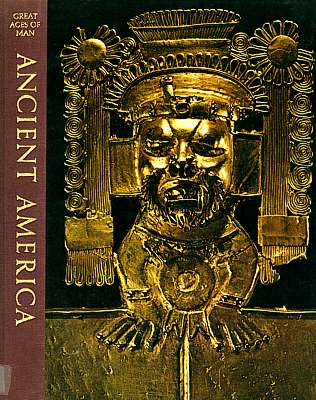
Time-Life Great Ages of Man Series – Ancient America.
NOTE: We have 75,000 books in our library, almost 10,000 different titles. Odds are we have other copies of this same title in varying conditions, some less expensive, some better condition. We might also have different editions as well (some paperback, some hardcover, oftentimes international editions). If you don’t see what you want, please contact us and ask. We’re happy to send you a summary of the differing conditions and prices we may have for the same title. PLEASE SEE IMAGES BELOW FOR JACKET DESCRIPTION(S) AND FOR PAGES OF PICTURES FROM INSIDE OF BOOK.
The “Great Ages of Man” series was released in the mid-1960’s. Each volume undertakes to describe the major events that happened in one specific time period (or “age”) in the development of mankind’s civilization(s). The volumes are richly illustrated, and designed as an introduction to the time frame covered. Especially compelling are the artists interpretations or recreations of what various ancient civilizations would have looked like – their architecture, homes, monuments, cities, daily life, jewelry, food, family life, dwellings, occupations, etc. As just one instance, the ruins of Babylon and Ur, Athens and Rome hint at the incredible richness of those fabled cities. The artist’s recreations in this series are simply mind-numbing. This is as close as you can be to actually having been there. Equally noteworthy are the photographic collections of artifacts and relics attributed to the specific age, really exceptional. The entire series is truly a magnificent introduction to the history of the era. If you could have just one book (or series of books) to introduce the history of humankind, this would have to be it. The overviews are concise and well-written. Together with the illustration and pictures they impart a wonderful mental and emotional “picture” of what life must have been like in various civilizations and at various times. Done in a style so wonderfully characteristic of Time-Life’s publications, these are over-sized “coffee table” type books full of impressive imagery. The pictures of the world’s greatest art and architecture alone are worth the cost of these books. But don’t get the impression that these volumes are “fluff”. While a particular volume might not quite take the place as a university degree, the material is well-written, informative, and immensely intellectually gratifying, overview though it might be.
Some of the subject material included is enumerated below so as to give you an idea of the rich content: CHAPTER ONE: The Earliest Americans. (The 13th Century Jade Death Mask of a Maya Chieftain from Chiapas, Mexico. Mochica Road Runners Relaying Messages. A Grooved Stone Point for Hunting Big Game. Ancient American Civilizations: Aztec, Maya, Inca, Tenochtitlan, Teotihuacan, Monte Alban, Copan, Tikal, La Venta, Chichen Itza, Chan-Chan, Machu Picchu, Cuzco. Migration from Siberia to the New World.). Picture Essay: A Group Portrait. (A Jade Olmec Figurine Holding a Child Representing the Offspring of the Jaguar God. Frozen in Ritualistic Poses: An Olmec Ceremonial Court in Jade. A Godlike Head of Jade: Feline Eyes Characteristic of Olmec Sculpture. The Mysterious Olmecs: The New World’s First Major Civilization. Olmec Village Artists: Village Beauty, the Pre-Columbian ‘Mona Lisa’; A Helmeted Warrior Armed with Weaponry, Hurling a Stone; Musicians Playing Instruments; A Scandalized Old Woman Wearing Ear Ornaments; A Peaceful Farmer Lost in Thought, Knees Drawn Up; A Woman Grinding Corn for Tortillas; A Villager Thumping a Drum to Accompany Dancers. The Maya of Southern Mexico and Central America: A Society of Talent and Exuberance, A Population of Flamboyant Skilled Artists and Architects. Sculpture: A Maya Priest with an Exaggerated Aristocratic Nose; A Maya Aristocrat Wearing a Long Brechclout, Doughnut-Shaped Earrings, in an Extravagant Pose. Aztecs: The Grim Inhabitants of Highland Mexico. Aztec Sculpture: A Warrior’s Face with Blunt, Uncompromising Features; Paying Homage to Nature, a Priest Wearing the Flayed Skin of a Young Sacrificial Victim to Appease Xipe Totec, the God of Spring; A Goddess of Death: A Deity in the Zapotec’s Ceremonial Center of Monte Alban; A Stern Expression of an Ancient Mexican Mask Decorated with Ear Plugs and Feather Plume from Teotihuacan. The Versatile Technicians of Peru: Mohica and Nazca. Portrait of a Ruler: A Mohica Head. Mohica Sculpture of a Seated Cripple with a Stump Leg. A Nazca Pot Depicting a Rotund Woman with Face and Wrists of Ceremonial Tattoos.). CHAPTER TWO: The Great Stone Cities. (A Zapotec Indian Jaguar-Shaped Urn with Bared Fangs and Knotted Scarf Circa 200BC, Monte Alban, Mexico. An Olmec Ceremonial Axe Head: An Olmec God with Flaming Eyebrows and Drooping Mouth. Middle American Peoples: Maya; Toltec; Olmec; Zapotec; Mixtec; Toltec; Tarascan; Totonac; Huastec; Chichimec; Aztec. Middle American Cities: Copan; Kaminaljuyu; Bonampak; Tikal; Labna; Sayil; Uxmal; Mayapan; Chichen Itza; Xicalanco; Palenque; La Venta; Tehauntepec; Tuxtla; Tres Zapotes; Monte Alban; Tilantongo; Tehaucan; Remojadas; Cholula; Tlaxcala; Teotihuacan; Cuernavaca; Toluca; Tenochtitlan. Middle American Geographical Features: Caribbean Sea; Gulf of Mexico; Pacific Ocean; Gulf of Tehauntepec; Bay of Campeche; Yucatan Peninsula; Motagua River; Usmacinta River; Isthmus of Tehauntepec; Sierra Madre Del Sur; Balsas River; Valley of Mexico; Lake Chapala; Sierra Madre Occidental; Lerma River; Santiago River; Mexican Plateau; Panuco River; Sierra Made Oriental. A Teotihuacan Mural of the Rain God’s Heaven Depicting the Dead Frolicking, Swimming, Dancing, Feasting, and Picking Flowers. Teotihuacan’s Three Massive Pyramids and the Two-Mile Long Avenue of the Dead; The Pyramid of the Moon; the Pyramid of the Sun; Temple of Quetzalcoatl.). Picture Essay: A Race of Master Builders. (Chichen Itza’s Mayan Temple of the Warriors. The Chichen Itza Castillo. Teotihuacan: A Pyramided “City of the Gods” that Dominated Middle American Culture for More than 300 Years. Teotihuacan’s Pyramid of the Sun: Ancient America’s Most Imposing Monument. A Precipitous Staircase Flanked by Stone Snake Heads Ascends the Temple of Quetzalcoatl; Ancient Mexico’s Serpent God. The First Great Mayan City of Tikal: An Oasis of Civilization Amid the Jungles of Guatemala. Tikal’s Pyramid Temple of the Giant Jaguar. University of Pennsylvania’s Temple Restoration. Copan: The Serene, Well-Ordered Honduras Center of Intellectual Life; Dedicated to Art, Science, and Sacred Games. The Ceremonial Ball Court of Mayan Copan. A Ritual Mayan Staircase Bearing the Longest Known Inscription of 2,500 Hieroglyphs. Labna: A Monument to a Maya Renaissance in the Low-Lying Hills of Yucatan. Yucatan’s Uxmal: A Mayan City of Plazas and Palaces with a Grim Portent of the Future. Toltec Influence on the Maya: An Altar Depicting a Skull and Crossbones. Uxmal Palace Architecture: A Recessed Arrow-Shaped Arch. Chichen Itza: A Meeting Place of Cultures Where the Great Maya Civilization Came to an End Under the Impact of the Invading Toltecs. The Toltec Temple of Warriors: Ranks of Stone Columns. Chichen Itza’s Main Temple of Castillo: A Sacrificial Altar in the Form of a Reclining Figure.).
CHAPTER THREE: An Age of Warrior Kings. (A Temple Column at the Temple to the Toltec Deity Quetzalcoatl: A Massive Stone Soldier in Full Battle Dress. The Ancient Valley of Mexico: Seat of the Mighty Aztec Empire and Their Island Capital Tenochtitlan. The Ancient Valley of Mexico Highlights: Lake Zumpango, Lake Xalfocian, Lake Texoco, Lake Xochimilco, Lake CHalco, Cuernavaca, Cholula, Tlaxcala, Popocatepel, Ixtaccihuatl, Otumba, Teotihuacan, Tepexpan, Texoco, Chalco, Xochimilco, Culhuacan, Ixtapalapa, Tenochititlan, Tlalteloco, Tlacopan, Tcuba, Tatilco, Azapotzalco, Tenayuca. Nahuatl: The Lyrical Aztec Language. Culhuacan: “Crooked Hill”, the First City of the Toltecs Founded by Ninth Century King Mixcoatl. Huitzlopochtli: the Sun God and God of War, Principal Deity of the Aztecs. Mictlantechutli: Lord of the Underworld”, God of the Dead, Who Wore a Mask Composed of a Human Skull. Mixtec: The “Cloud People”, a Highly Cultured Civilization in the Oaxaca Valley. Nezahualcoyotl: “Hungry Coyote”, a Texococan King Notable as a Poet-Philosopher. Oaxaca: “Place of the Mimosa”, a Valley Inhabited by Zapotec and Mextec Tribes. Quetzalcoatl: “Fetahered Serpent”, the God of Creation, Inventor of Agriculture, Patrol of Learning. Tenochititlan: “Near the Cactus”, the Aztec Capital City Founded in 1325AD on an Island in Lake Texoco. Teotihuacan: “Place of the Gods”, An Early Ceremonial Site Located Near Present-Day Mexico City. Tezcatlipoca: “Smoking Mirror”, A Warrior God Who Observed the Deeds of Men Through a Mirror. Tlaloc: “He Who Makes Things Grow”. God of Rain and Lightening Who Lived Amidst High Mountaintops. Tlaxcala: “Place of Bread”, a Region of Central Mexico Whose Inhabitants Fought the Aztecs as Allies of Cortez. Xochimilco: “Field of Flowers”, a Village South of Mexico City Noted for its “Floating Gardens”. An Eagle Devoring a Snake Atop a Cactus: The National Emblem of Mexico and Mystic Symbol thew God Huitzilopochtli and the Ancient City of Tenochtitlan. Aztec Chinampas: Man-Made Agricultural Islets of Aztec. ). Picture Essay: (The Legend of Eight Deer: Mixtec Picture Writing and the Fierce Chieftain of the Mixtec (the “Cloud People”) A Picture Page from Eight Deer’s Life. As High Priest in the Company of His Brother Twelve-Earthquake Bleeding Tiger. Eight-Deer Ocelot-Claw Sacrificing a Deer and a Dog, Offering the Hearts to the God Thirteen-Reed.. As Conqueror of a Land Where the Inhabitants Lived Underground or in Caves. Eight Deer in the Black Body Paint of a Priest and Wearing an Eagle Headdress Officiating at the Funeral of Three Lizard. Eight Deer in a Black Mask Holding an Incense Burner Making an Offering to the Sun at a Location Referred to as “alligator Hill”. Eight Deer’s Wife(?) “Three Monkey”. “Six-Monkey Warshirt”, Advisor to the Rulers of the Cloud People, Sitting on a Skin-Covered Stool as Chief Mourner at a Funeral, Making an Offering to the Goddess “Nine-Grass”. The Funeral of Three-Lizard: Six-Reed Year (1031AD), Six-Serpent Day. Three-Lizard Collar-of-the-Flintstones, as Priest of Xiuhcoatl (the “Fire Dragon”) Attired in Turtle Shell, Headpiece, and Funeral Dress, and Relative of Eight-Deer, Officiating at the Funeral of Nine-Grass, a Noble Who Died in Old Age. A Commemoration of Eight-Deer’s Conquest of a City Identified as the “Place Where to Soil is Tilled”. A Commemoration of Eight Deer’s Conquest of “Where the Grass Bends” in Two-Reed Year (1028AD) on 10-Flower Day. The Death of the Royal Three-Lizard, Relative to Eight-Deer, the Goddess Nine-Grass Presiding Over the Funeral, Nine-Grass Adorned with the Symbols of Death; a Skull Covers Her Face, Robes Decorated with Skulls and Bones, in a Temple Where the Roof is Lined with Skulls and Hearts. The Wars and Honors of a King. A Priest Performing the Ceremonial Nose-Piercing of Eight-Deer. A High-Level Conference and Military Pact Between Eight-Deer and the Toletc Leader “Four-Tiger”. The Extension of Eight-Deer’s Kingdom from the Mixtec Highlands South to the Pacific Coast and North to Cholula: Sacrificing Vanquished Foes. A Procession of Warriors: Eight-Deer, his Half Brother Twelve-Earthquake and Three Allied Lords. The Sacrifice of Eight Deer’s Half-Brother Nine-Flower: An Allusion to a Dynastic Rivalry Depicted by a Fighting Eagle and Ocelot. The Dynastic War for Xipe-Bundle. Capturing a Young Rival Eight-Deer Grabs Four-Wind by the Hair. The Sacrifice of a Prince: Four-Wind’s Older Half-Brother, Ten-Dog is Attacked by Eight-Deer and Weeping, Tied to a Stone, Sacrificed. A Council of War Strategy Between Eight-Deer and the Toltec Leader Four-Tiger: Crossing a Sea in Canoes in the Assault of the Town of Xipe-Bundle. The Rituals of a Royal Death. Funeral Rites for Twelve-Earthquake. Eight-Deer Sacrificing his Half-Brother Twelve-Earthquake to Ensure a Royal Death and After-Life. Cremating the Body to a Skeleton at Seven-Flower Hill. Eight-Deer in a Jaguar Throne. The Elements of Religious Ceremony: Winning Favor with the Gods by Sacrifices of Dogs, Birds, and Humans by Ripping Out the Throbbing Heart. The Drinking of Intoxicants, Eating Hallucinogenic Mushrooms, Ritual Suicide.).
CHAPTER FOUR: High Culture in the Andes. (A Brilliant Embroidered Paracas (Skilled Textile Craftsmen of Southern Peru) Burial Cloth Depicting a Mythical Monster with Faces Attached to its Long Tongue, Carrying a Trophy Head Under One Arm. Pre-Inca Cultures and the Inca Empre: Cocle, Muisca, Quimbaya, Tolima, Quito, Tumbez, Mochica, Chan-Chan, Chimu, Cajamarca, Chavin, Chavin de Huantar, Paramonga, Supe, Pachacamac, Huari, Machu Picu, Cuzco, Paracas, Nazca, Tiahuanaco, Tiahuanaco, Araucanian. Geographical Features of the Pre-Inca Cultures and the Inca Empire: Isthmus of Panama, the Carribbean Sea, Andes Mounatins, Cauca River, Magdalena River, Ancasmayo River, Amazon River, Maranon River, Ucayali River, Urubam,ba River, Lake Poopo, Maule River, Lake Titcaca, Pacific Ocean. Trans-Pacific Riddles: Ancient Asian Contact with South American Cultures? The Feline Divinities, Earthen Ceremonial Platforms, and Small Reflecting Mirrors Used in Religious Rituals; China’s Shang Dynasty Compared to the Olmecs of Mexico and the Chavin Civilization of Peru. Lion-Headed Thrones, Stepped Pyramid Temples, Doorways with Serpent Columns and Balustrades, and Sacred Tree Forms; Similarities Between Hindu-Buddhist India and the Maya. Lotus Friezes Portraying Reclining Men Grasping Winding Lotus Stems, Along With Depictions of Water Monsters or Fish; Similarities Between Both East Indian and Mayan Temples. Wheel Animals (the Wheel was Not Used in Ancient America) Similarities Between India and Ancient Mexico. Similarities Between Looms and Pottery-Making Techniques Comparing Ancient America and Ancient Asia. A Depiction of a Mochica Chieftain Receiving Prisoners of War. ). Picture Essay: Gold: Sweat of the Sun. (A Medusa-Like Golden Headdress of Writing Snakes Produced by the Nazcas of Early Peru. Ancient Craftsmen of the Andes: The 800BC Stone-Age Civilization of Peru: Chavin de Huantar’s Goldsmiths. An Elegant Beaker in Gold in the Form of a Human Head Produced by a Chimu Goldsmith of Ancient Chan-Chan. A Mochica-Made Chavin-Inspired Shell-Inlaid Golden Jaguar Headdress. A Gold Snarling Jaguar: A Sewn-in Vestment Ornament for a Chavin Priest. A Hoard for the Hereafter. Ritual Gold Corn Beer Cups of Incan Origin. A Gold Doll-Like Figure of a Young Mochica Girl. A Hollow Gold Tattooed Hand from a Chimu Tomb. A Gold Puma-0Skin Pouch Containing a Religious Offering of Coca Leaves. A Golden Bird Vessel of Chimu Origin. A Golden Noble Lady Figurine. A Gold Sacrificial Knife: The Effigy of an Unknown God. Golden Graven Images of Man. A Chest Ornament in the Form of a Tolima Man. A Heroic 1.37 Pound Gold Statue of a Quimbaya Nobleman. A Golden Muisca Warrior. Golden Mexican Magnificence. A Golden Necklace of Pearls, Turquoise Beads, and Red-Colored Shells. A Glittering Gold and Turquoise Brooch in the Form of a Mixtec Ceremonial Shield. A Formidable God in Gold: The Mextec Lord of Death and Darkness.).
CHAPTER FIVE: Gods and Empires. (A Clay Urn Portraying a Maize God: A Zapotec Deity Flanked by Twin Ears of Corn and a Floral Headdress Prominently Displaying an Open-Mouth Bat. A Silver Incan Statuette Holding an Ear of Corn. Life Amongst the Ancient Aztecs of Mexico and Incas of Peru. Tenochtitlan, Aztec Capital, Dominant City-State in the Fertile Valley of Mexico. The Aztec Agricultural Economy. The Arcaded Market Square of Tlalteloco: Capacity 60,000 Merchants and Shoppers. Aztec Gods Nourished by the Hearts of Sacrificial Victims. The Human Sacrifice Core of Toltec Religion: Nourishing to Sun God Tezcatlipoca with Human Hearts and Blood. The Aztec God Huitzilopochtli of Tenochtitlan. Daily Life Amongst the Aztec. The Inca Empire of Peru: Peace and Cooperation. The 650 AD Peruvian Andes Empire of Tiahuanaco. The Peruvian Inca Empire and its Hierarchical Organization and the Ayllu (Extended Family Unit). The Organization of Agriculture and Public Works and the Management of State Agricultural Lands. The (Socialist) State-Managed Economy of the Incas. The Selection, Education, and Distribution of “Chosen Women”. Daily Life Amongst the Inca. Viracocha: The Creator God of the Incas.). Picture Essay: Staging an Awesome Pageant. (Bonampak: An 1100 Year Old Mural Depicting the Religious Ceremonies of the Maya, Actors Masked as Earth Gods (Crocodile, Crab, etc.), a Pageant to Propitiate the Gods. The Sacred Ceremony Begins: The Mural Depiction of a Ritual Procession Honoring the Gods of Fertility and the Earth. 14 White-Robed Aristocrats and the Snake-Headed Rain God. The Procession’s Actors: The Halach Uinic (Head Chief), the Chief’s Juvenile Son, The Chief’s Wife, Servants, the Chief’s War Captains Dressed in Jaguar Skins, Heavy Jade Necklaces, Earrings, and Wristlets. A Raid for Victims: Capturing Unarmed Prisoners for Ritualistic Sacrifice. The Judgment: Death. The Ritualistic Wounding of the Prisoners: Piercing their Fingers to Draw Blood. Disembodied Heads on a Bed of Ceremonial Leaves. Celebrating the Final Rites: Bloodletting Instruments Pierce the Chief’s Tongue. Marching to the Scene of the Sacrifice: Musicians and Attendants Led by Standard-Bearers Carrying Devices Composed of Brightly Colored Feathers. The Chief and His Ladies Seated at a Stone at Table Participating in the Bloodletting Rite.). CHAPTER SIX: Triumphs of Native Genius. (Mayan Hieroglyphs from a Temple Doorway at Palenque, Mexico: Ancient America’s Most Sophisticated Form of Writing. Incan Silver Figurines of an Alpaca (High-Quality Wool) and a Llama (Meat, Pack Animal). A Mochica Pottery Vase from Northern Peru Depicting an Ancient Cloth Factory. Chinampa: Agriculture on Man-Made Islands in the Shallow Lakes of the Valley of Mexico. The Guanaco: Forbearer of the Llama and Alpaca. Irrigation Agriculture in the Andean Foothills of Peru. Peru’s Concentrated Fertilizer: The Guano of Coastal Seabirds. Andanes: The Agricultural Terraces of the Inca. Incan Bridge and Road engineering. Nezahualocoyotl’s Dikes and Aqueducts of Tenochtitlan. The Stone Temples, Palaces, and Carved Monuments of the Aztec, Inca, Maya, and Tiahuanacans. Pachacuti’s 15th Century Incan Citadel of Sacsahuaman. The Jade Carvings of the Olmec Circa 800BC. The Mixtec and Aztec Goldsmiths of Mexico. The Textiles of the Peruvian Inca. Aztec and Mixtec Glyphs. The Priestly Hieroglyphs of the Maya.). Picture Essay: The Indian Engineers. (The Stone Walls, Terraces, Stairways, and House of Machu Picchu. Riddles of the Peruvian Desert: Nazca’s Rectilinear Animal Patterns. Geometrical Patterns by Nazca Valley Indians: Astronomical Calendars and Sky-Dwelling Gods? Networks of Roads and Bridges. The 7,000 Mile Inca Highway System: Colombia to Chile (Tumbez, Chachapoyas, Paramonga, Nazca, Machu Picchu, Cuzco, Sandia, Quito, Maule River.) Stone Bridge Piers of the Carabaya River Gorge. Formidable Lines of Defense: The Massive Triple Walls of Cuzco’s Sacsahuaman Citadel. The Paramonga Citadel: A Garrison Protecting the Inhabitants of the Chimu Valley. Massive Walls of Interlocking Stones: In ca Architecture. The Twelve-Sided Stones of the Inca Palace at Cuzco. Gigantic Bulwarks of Cuzco’s Sacsahuaman Citadel. City on a Mountaintop: The Lost Stronghold City of the Inca Machu Picchu. ). CHAPTER SEVEN: Horsemen from the Sea. (Spanish Booty: A 16th Century Ornate Bowl of Gilded Silver. Hernan Cortes and the Conquest of Mexico: Cuba to the Coast of Yucatan; to San Juan de Ulia and Cempoalla; to Villa Rica de la Vera Cruz; to Tlaxcala and Tenochtitlan. A 17th century portrait of Hernan Cortes in elaborate armor. Francisco Pizarro’s conquest of Peru and the Incas (1524-1533 AD). Picture Essay: The Aztecs’ Orderly Society. (Moctezuma’s Palace and social hierarchy. The Guided Steps of Childhood. The many occupations of an Aztec juvenile male. Domestic chores and food rations for children. The Joys and Penalties of Adult Life. Disciplining a child (with a fire of hot peppers). Marriage rituals: feasting on turkey and corn, carrying the bride to the groom’s home on an old woman’s back, tying the knot. Capital punishment for drunkards, adulterers, and thieves. Purifying Rituals, Sacred Games. An Aztec steam bath. A manly game: climbing the pole. Playing Patolli and Macuilxochitl, Aztec God of Gambling. A Powerful Religion. Worshipping the skull-faced god of the dead. Sacrificing Humans to the sun god.). CHAPTER EIGHT: The Deathless Heritage. (Reflections of the past: an ancient pottery figurine seen in a 700 year old carved-frame obsidian mirror. A mixture of styles: a colonial church at Mitla built alongside a Mixtec priest’s palace. Picture Essay: A People’s Pride. (A fluorescent sun: modern version of an ancient Aztec symbol. Mexico City’s National Museum of Anthropology. A stone statue of the Aztec God of Night. A 15 foot stone statue of a Toltec Warrior from the Temple at Tula. The Temple of the Feathered Serpent at Teotichuacan, the Aztec City built by the gods. The greatest Aztec ruin: the capital city of Tecnochtitlan. Deep inside a Mayan pyramid: the tomb of a high priest at Palenque. The Olmec’s 3,000 year old monolithic heads.). I always ship books Media Mail in a padded mailer. This book is shipped FOR FREE via USPS INSURED media mail (“book rate”). All domestic shipments and most international shipments will include free USPS Delivery Confirmation (you might be able to update the status of your shipment on-line at the USPS Web Site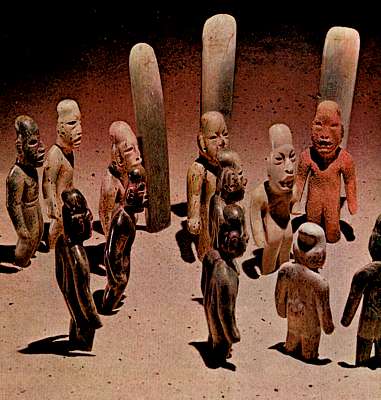
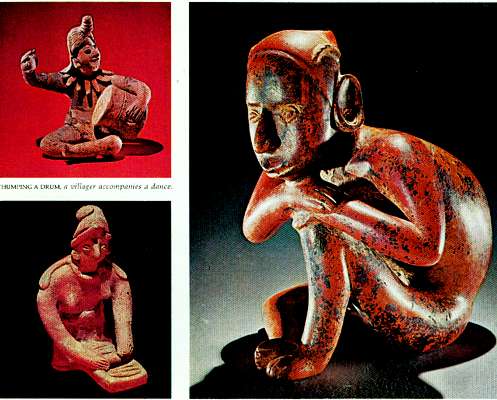
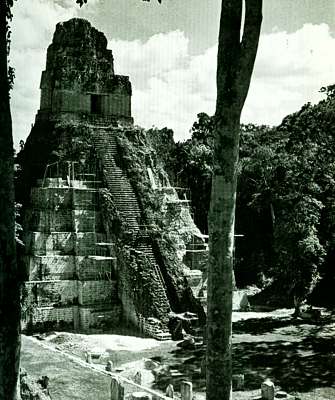
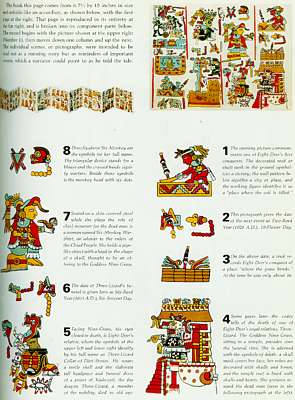
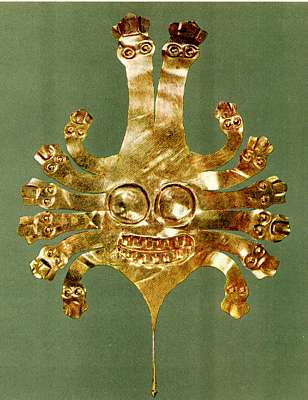
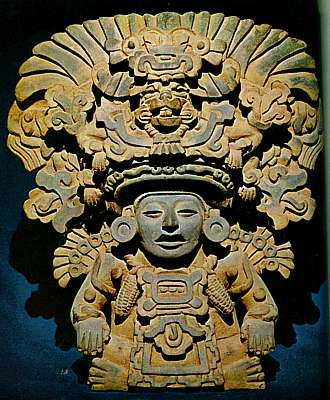
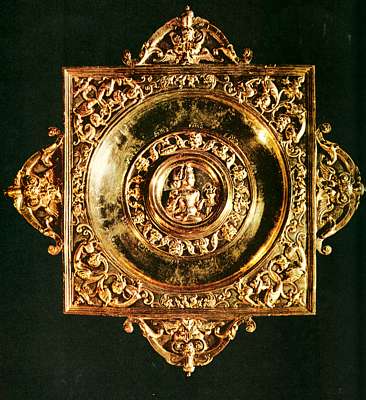
Most international orders cost an additional $12.99 to $33.99 for an insuredshipment in a heavily padded mailer, and typically includes some form of rudimentary tracking and/or delivery confirmation (though for some countries, this is only available at additional cost). There is also a discount program which can cut postage costs by 50% to 75% if you’re buying about half-a-dozen books or more (5 kilos+). Rates and available services vary a bit from country to country. You can email or message me for a shipping cost quote, but I assure you they are as reasonable as USPS rates allow, and if it turns out the rate is too high for your pocketbook, we will cancel the sale at your request. ADDITIONAL PURCHASES do receive a VERY LARGE discount, typically about $5 per book (for each additional book after the first) so as to reward you for the economies of combined shipping/insurance costs. Your purchase will ordinarily be shipped within 48 hours of payment. We package as well as anyone in the business, with lots of protective padding and containers.
All of our shipments are sent via insured mail so as to comply with PayPal requirements. We do NOT recommend uninsured shipments, and expressly disclaim any responsibility for the loss of an uninsured shipment. Unfortunately the contents of parcels are easily “lost” or misdelivered by postal employees – even in the USA. That’s why all of our domestic shipments (and most international) shipments include a USPS delivery confirmation tag; or are trackable or traceable, and all shipments (international and domestic) are insured. We do offer U.S. Postal Service Priority Mail, Registered Mail, and Express Mail for both international and domestic shipments, as well United Parcel Service (UPS) and Federal Express (Fed-Ex). Please ask for a rate quotation. We will accept whatever payment method you are most comfortable with. If upon receipt of the item you are disappointed for any reason whatever, I offer a no questions asked return policy. Send it back, I will give you a complete refund of the purchase price (less our original shipping costs).
Most of the items I offer come from the collection of a family friend who was active in the field of Archaeology for over forty years. However many of the items also come from purchases I make in Eastern Europe, India, and from the Levant (Eastern Mediterranean/Near East) from various institutions and dealers. Though I have always had an interest in archaeology, my own academic background was in sociology and cultural anthropology. After my retirement however, I found myself drawn to archaeology as well. Aside from my own personal collection, I have made extensive and frequent additions of my own via purchases on Ebay (of course), as well as many purchases from both dealers and institutions throughout the world - but especially in the Near East and in Eastern Europe. I spend over half of my year out of the United States, and have spent much of my life either in India or Eastern Europe. In fact much of what we generate on Yahoo, Amazon and Ebay goes to support The Hermitage Museum in St. Petersburg, as well as some other worthy institutions in Europe connected with Anthropology and Archaeology.
I acquire some small but interesting collections overseas from time-to-time, and have as well some duplicate items within my own collection which I occasionally decide to part with. Though I have a collection of ancient coins numbering in the tens of thousands, my primary interest is in ancient jewelry. My wife also is an active participant in the "business" of antique and ancient jewelry, and is from Russia. I would be happy to provide you with a certificate/guarantee of authenticity for any item you purchase from me. There is a $2 fee for mailing under separate cover. Whenever I am overseas I have made arrangements for purchases to be shipped out via domestic mail. If I am in the field, you may have to wait for a week or two for a COA to arrive via international air mail. But you can be sure your purchase will arrive properly packaged and promptly - even if I am absent. And when I am in a remote field location with merely a notebook computer, at times I am not able to access my email for a day or two, so be patient, I will always respond to every email. Please see our "ADDITIONAL TERMS OF SALE."




















